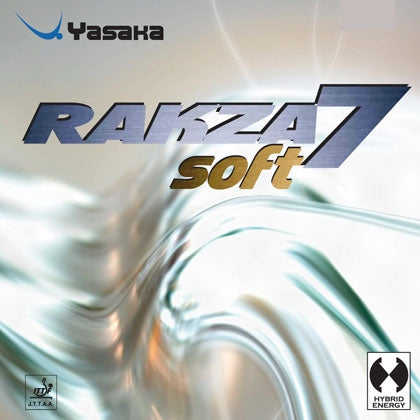Introduction
Chaque joueur de tennis recherche toujours des réponses auprès d'experts lorsqu'il se demande : « Quelle est la durée de vie d'une raquette de tennis de table ? » ou « Quand faut-il remplacer les revêtements et le cadre ? » Le remplacement du matériau des bois de tennis de table dépend généralement de votre fréquence de jeu. Lorsque le revêtement de la raquette perd de son adhérence ou de son brillant, il est impératif de le remplacer immédiatement, sous peine de compromettre vos performances.
Voyons la différence exacte entre le cadre et les revêtements, principaux composants des équipements de tennis de table modernes ! Le cadre, s'il correspond au niveau du joueur, peut durer plusieurs années. La fatigue des matériaux peut tout au plus poser problème, mais, métaphoriquement, le cœur de la raquette, sa qualité, est préservée longtemps. Cependant, à mesure que le joueur progresse, il doit faire de nouveaux choix. Faut-il utiliser du carbone pour un cadre plus rigide, ou opter pour d'autres combinaisons de bois pour plus de vitesse ? Qu'en est-il du toucher inhérent au bois ? De toutes ces questions, on peut conclure que le choix du bon cadre est crucial et souvent sous-estimé.
En revanche, les revêtements contribuent à la vitesse et à l'adhérence, mais ces qualités diminuent avec l'usage. L'élasticité des sous-couches a considérablement augmenté ces 10 à 15 dernières années grâce aux progrès technologiques constants. Avant l'introduction obligatoire des colles à base d'eau, on utilisait des colles chimiques contenant des COV. Les vapeurs de ces colles pénétraient la sous-couche du revêtement, provoquant son expansion et augmentant ainsi la vitesse. Une fois les vapeurs dissipées, le revêtement retrouvait sa forme et ses valeurs de vitesse initiales. Les joueurs avaient donc l'habitude de recoller quotidiennement pour maintenir cette vitesse !
Bien que ces revêtements existent encore, la réglementation officielle interdit leur utilisation, les rendant non compétitifs. Les revêtements modernes possèdent un effet collant naturel, conservant ainsi leur élasticité. Cependant, cet effet n'est pas illimité ; le revêtement perd progressivement ses propriétés. Cela s'applique également à l'adhérence : malgré des nettoyages répétés (toujours après chaque partie), le revêtement devient plus lisse avec le temps. Recoller est inefficace, car la colle à base d'eau ne dégage pas de vapeurs.
Qu'est-ce que cela implique pour le remplacement ? Selon la fréquence de jeu, on peut généralement affirmer qu'avec une utilisation deux à trois fois par semaine, un remplacement est recommandé après environ six mois. Pour un entraînement quotidien, un remplacement peut être recommandé après deux à trois mois, tandis qu'avec des entraînements et des matchs moins fréquents, il peut être prolongé jusqu'à environ neuf mois.
Ceci est bien sûr un conseil ; retarder le remplacement peut entraîner une compensation. Pour maintenir la même qualité d'action, une résistance accrue peut être nécessaire. Il est essentiel de noter que le matériau sera sujet à des fluctuations. Les zones où la balle a été frappée le plus fréquemment sont moins résistantes et efficaces que celles qui ont été frappées moins fréquemment. Le même coup donnera des résultats différents.
Qu'est-ce que le remplacement de matériel au tennis de table ?
Au tennis de table, le remplacement du matériel consiste généralement à remplacer les composants usés ou endommagés d'une raquette, comme le bois ou les revêtements. En général, après une utilisation deux à trois fois par semaine, il est conseillé de le remplacer après environ six mois. Pour un entraînement quotidien, ce remplacement peut être recommandé après deux à trois mois, tandis que pour des entraînements et des matchs moins fréquents, il peut être prolongé jusqu'à environ neuf mois.
Histoire : du celluloïd aux balles en plastique
Balles en celluloïd – Fabriquées en celluloïd, elles ont été les premières balles de tennis de table introduites en 1901. Plus tard en 2014, elles ont été remplacées par des balles en caoutchouc/liège car elles contenaient un matériau volatil et hautement inflammable.
Balles en plastique – L'une des plus grandes usines chinoises de balles a commencé à produire ses premiers échantillons de balles en plastique en coopération avec l'ITTF. Cette innovation majeure est due au fait que ces nouvelles balles étaient produites d'une seule pièce. En revanche, les balles en celluloïd étaient inflammables et coûteuses. La production de balles en plastique chinoises nécessitait des machines et des technologies de pointe.
Matériaux des lames : bois ou composite
Un joueur de tennis doit toujours faire un choix difficile : choisir entre des lames composites et des lames tout bois . Ces dernières offrent de meilleures sensations et un excellent contrôle, idéales pour des coups créatifs et des variations faciles. Leurs lames sont épaisses et denses, comme on les retrouve généralement sur les raquettes de tennis traditionnelles.
À l'inverse, les lames en carbone composite intègrent des matériaux comme la fibre de carbone, offrant une vitesse supérieure sans effort. Elles offrent une excellente rigidité et une vitesse de pointe optimale, ce qui les rend idéales pour les joueurs offensifs. Fabriquées en matériaux composites, elles sont plus résistantes à l'usure et aux dommages que le bois.
Remplacement du caoutchouc et règles de l'ITTF
Selon le règlement de l'ITTF, un joueur ne peut utiliser des revêtements homologués par l'ITTF que lors des compétitions officielles. Voyons quelles sont leurs règles :
-
L'épaisseur maximale d'un caoutchouc doit être de 4,0 mm, y compris l'éponge et la feuille de dessus.
-
En cas de réglementation de couleur, le caoutchouc doit être rouge d'un côté et noir de l'autre côté.
-
Seules les colles non toxiques et à base d’eau sont autorisées.
-
Changez-la uniquement lorsque votre raquette est endommagée.
Comment cela affecte-t-il le gameplay ?
Le remplacement du revêtement au tennis de table peut avoir un impact considérable sur votre vitesse de jeu, vos effets, votre style et votre contrôle général. Avec un nouveau revêtement, vous pouvez obtenir plus d'effets, des coups plus rapides, un meilleur contrôle et adapter votre style de jeu.
Choisir le bon matériau pour votre style
Si vous envisagez de remplacer le revêtement de votre raquette de tennis de table, gardez à l'esprit plusieurs facteurs pouvant influencer sa longévité, ses performances et son admissibilité à la compétition. Voici un guide complet des matériaux pour raquettes de tennis de table :
Points à méditer :
-
Durabilité et longévité – Choisissez le matériau de la raquette qui offre des performances et une durabilité constantes.
-
Épaisseur de la mousse – Choisissez une épaisseur de mousse adaptée à votre style de jeu et à votre niveau. Si vous êtes débutant ou joueur défensif, optez pour des mousses plus fines. À l'inverse, les mousses plus épaisses sont idéales pour les joueurs avancés/offensifs.
-
Approbation du caoutchouc IITF pour les compétitions – Si vous participez à un tournoi, votre caoutchouc de tennis doit être répertorié sur l'IITF LARC, ce qui garantit la conformité.
-
Prix et réputation de la marque – Lorsque vous choisissez un caoutchouc pour votre raquette, vous devez tenir compte de son coût et de la réputation de sa marque.
|
Matériel |
Avantages |
Inconvénients |
Commun dans |
|
Bois |
Bon marché/Excellent contrôle Bon toucher et sensation |
Moins de puissance et de vitesse |
Lames défensives et polyvalentes |
|
Fibre de carbone |
Très puissant et rapide |
Contrôle réduit |
Lames axées sur la vitesse et offensives |
|
Arylate-Carbone |
Contrôle et vitesse équilibrés Excellente flexibilité pour le spinning |
Cher |
Équipement hybride de niveau expert |
|
Zylon |
Rapide et léger |
Tirs tactiles difficiles à contrôler |
Configurations offensives sévères |
En conclusion, dans le labyrinthe des matériaux, il est conseillé de demander conseil. Le nombre d'heures d'entraînement et le style de jeu déterminent également un choix responsable, et nos experts expérimentés se feront un plaisir de vous accompagner pour tous vos plaisirs !
FAQ
Q1) Pouvez-vous expliquer quels types de matériaux sont utilisés pour construire les lames de raquette de tennis de table ?
Réponse) Les lames de raquettes de tennis de table sont principalement fabriquées à partir de matériaux en bois/composites, par exemple en fibre de verre et en fibre de carbone.
Q2) Pourquoi l'ITTF a-t-elle interdit certains revêtements ?
Réponse) Certains caoutchoucs sont interdits par l'IITF pour garantir la sécurité, la cohérence et l'équité dans le jeu. Certaines des principales raisons sont les rotations/vitesses excessives, les matériaux toxiques/dangereux, les tromperies de rotation cachées, les changements dans les règles de l'IITF et les caoutchoucs non approuvés.
Q3) Comment savoir quand remplacer mon caoutchouc de tennis de table ?
Réponse : Vous pouvez remplacer votre revêtement de tennis de table s'il est endommagé, s'il présente une surface brillante ou s'il est conçu pour une vitesse lente. De plus, si vous remarquez des fissures ou une perte d'effet, remplacez-le.
Q4) Qu'est-ce qui est mieux : une lame en carbone ou une lame en bois ?
Réponse) Les lames de tennis de table en bois peuvent être le meilleur choix pour les débutants ou les joueurs privilégiant le contrôle. En revanche, les lames en carbone sont parfaites pour les attaquants expérimentés.
Q5) Le matériau de la lame affecte-t-il la rotation ?
Réponse : Oui ! Le matériau du bois de tennis de table influence l'effet grâce à sa flexibilité, son temps de contact et ses vibrations.






